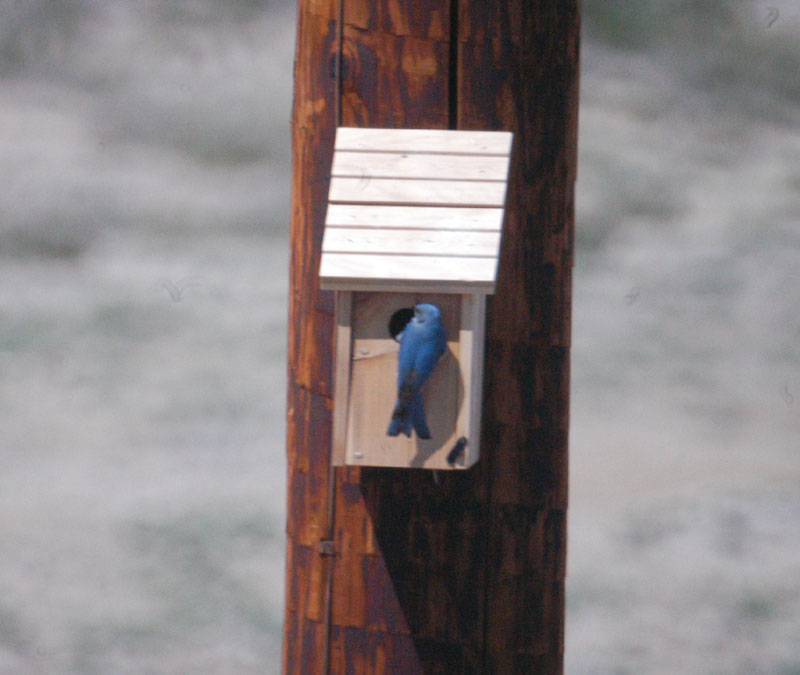
Mountain BlueBird
Sialia currucoides: Mountain Bluebirds are small, slim, long-winged thrushes. Males have a turquoise blue head and back, slightly paler breast, deep blue wings and tail, and a whitish belly and undertail coverts. Females are brownish gray with a white belly and undertail coverts, and a touch of blue on the tail.
The population of Mountain Bluebirds now appears to be relatively low but stable. Numbers of Mountain Bluebirds appear to be limited by nest-site availability. They nest as solitary pairs, but nests can be found near each other when available holes are close together. Today, close to the majority of Mountain Bluebirds nest in birdhouses, or nest boxes, provided by humans.
Mountain Bluebirds occupy open woodland and edge habitats with short grasses and few shrubs. They feed by watching for prey from perches and then fly in to drop on insects and other arthropods. More than the other bluebird species, they will also hover above prey and then drop down to catch it. They avoid areas of high grass, presumably to avoid predators, preferring very low grass about an inch high. In addition to recently burned areas, clear cuts provide appropriate habitat and are frequently used. Mountain Bluebirds are highly migratory with flocks wandering east into the Great Plains and a few individuals straying irregularly in fall and winter as far as the East Coast. Mountain Bluebirds also move to lower elevations within their breeding range during the winter months. Mountain Bluebirds, which survive temperatures as low as 10 degrees Fahrenheit, are found in colder regions than Western Bluebirds during winter. The extent of winter migration appears to be related to the availability of fruit and the severity of the winter.
 |
Taken April 24, 2007, with 500mm mirror lens. 1/2000th sec at ISO 1600 |